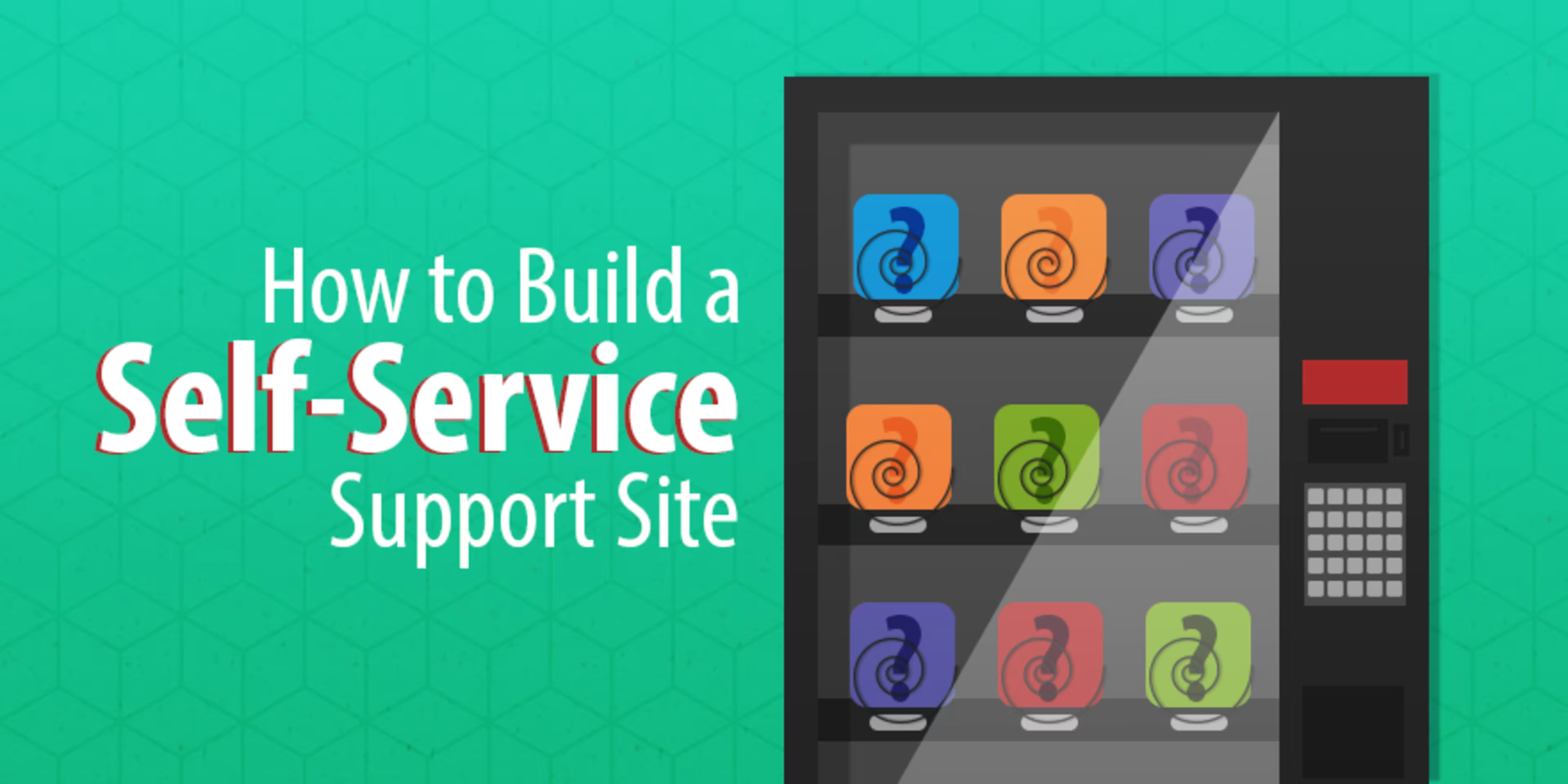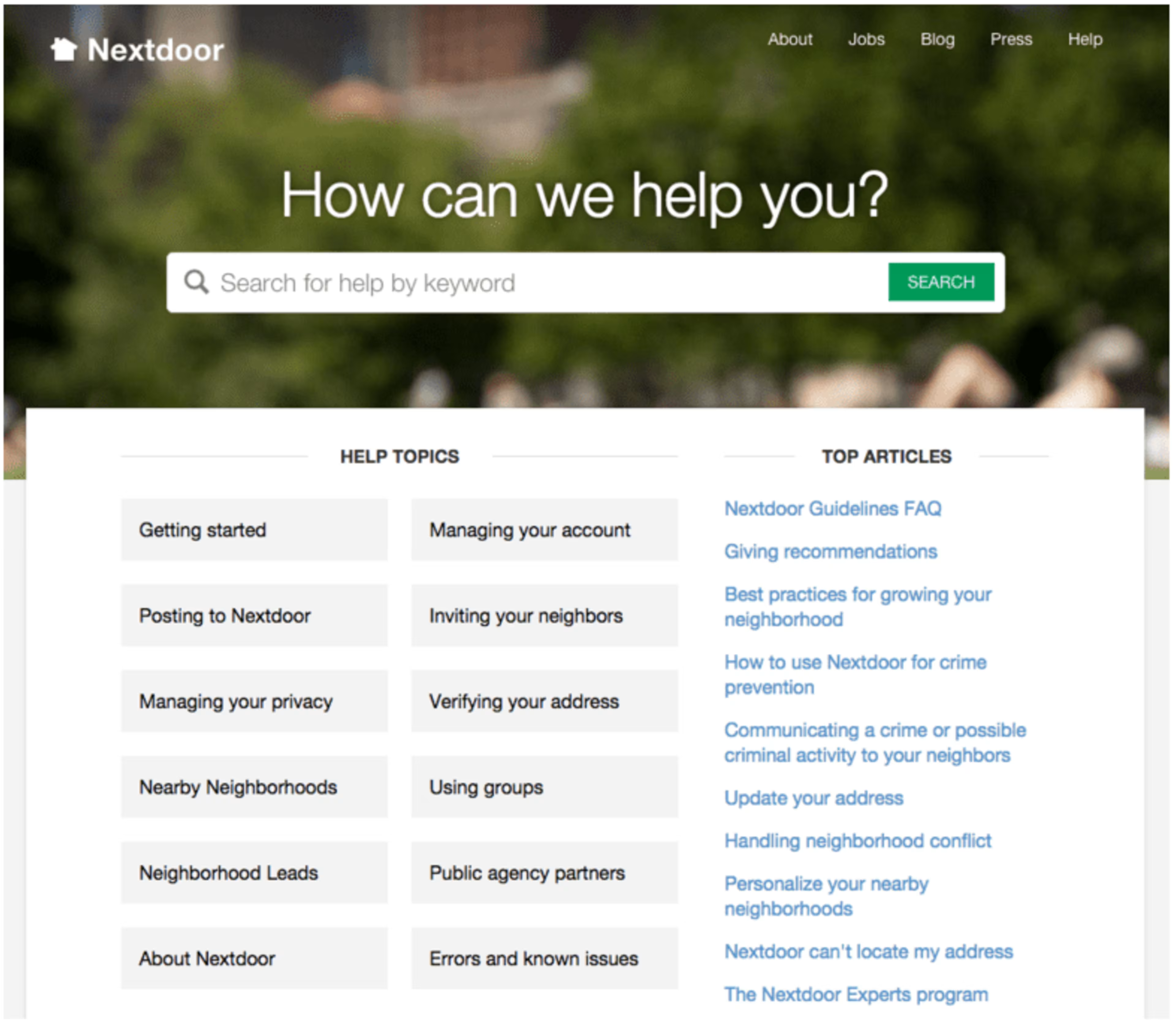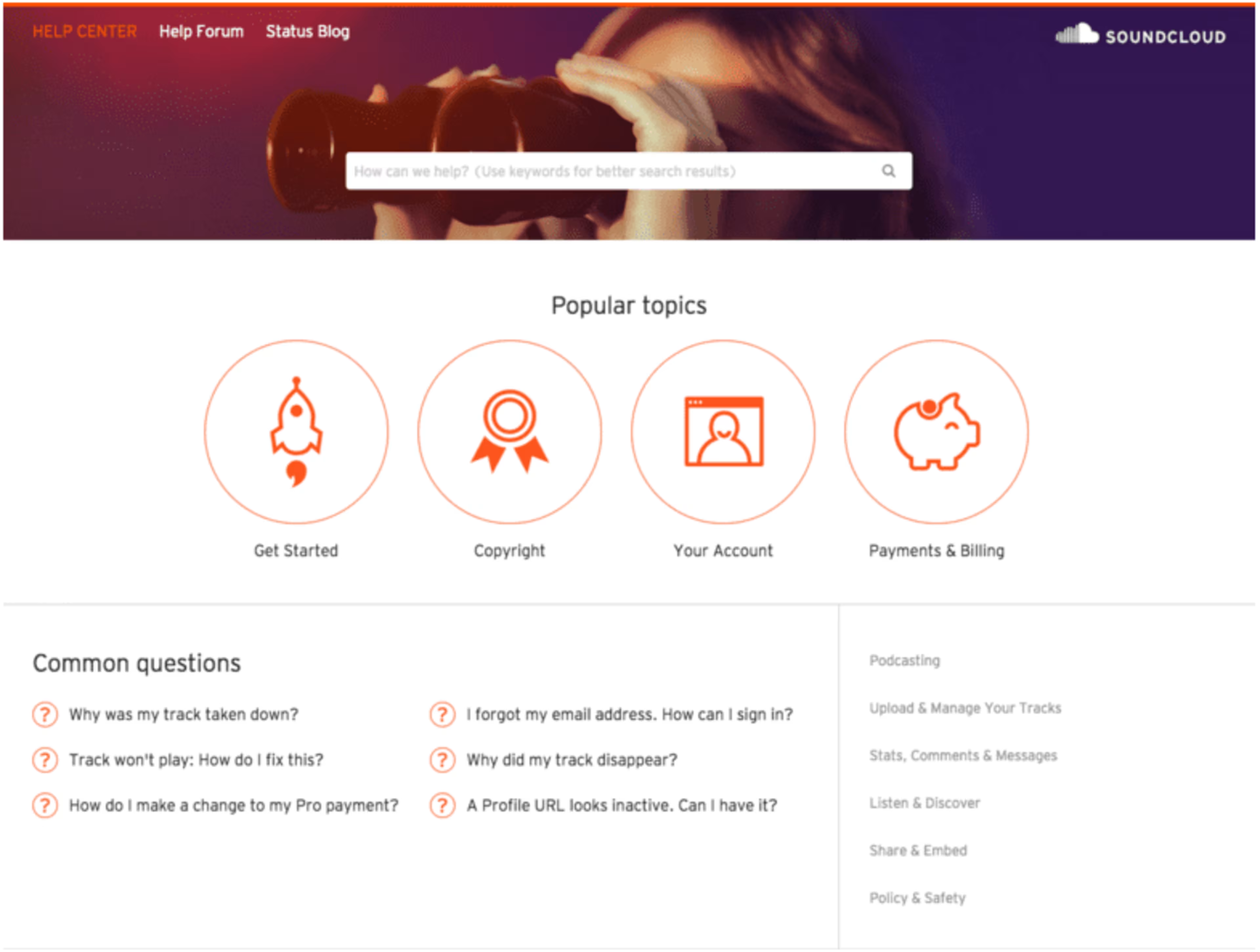It’s no secret that today’s uber-connected customers like to find their own answers — on their own timeframe — and most would rather find solutions on a self-service portal than make a telephone call. In fact, 67% of consumers prefer self-service over speaking to a company representative.

Offering a self-service support site can drive customer satisfaction in a big way.
There’s also a huge downside to not offering a self-service portal. Customers are frustrated when they can’t get what they want, when they want it. 78% of consumers have bailed on a transaction or not made an intended purchase because of a poor service experience. That can have a big (negative) impact on a small business.
So how do you build a self-service support site where customers can easily find solutions?
It’s not as difficult as it sounds. If you have the right tools and process, building a support center can be an easy and cost-efficient way for growing businesses to help customers. Here are six steps to delivering an self-service support experience that customers will rave about.
1. Send customers to your support portal.
This may sound like a no-brainer, but if your support site is going to be successful, customers need to know where it is. Send them there! The easiest way to get customers to start using your site is to add self-service calls-to-action.
This can be difficult for established companies who are launching a new support portal and need to transition customers over. Begin by including links to your support center on your corporate site, or by adding links within your product or app.
Having a variety of user types within its social networks, Nextdoor's support center provides quick access to content categorized by audience type and content type. Audiences are quickly able to find access to common questions or drill down based on their user type.

You should also consider using a customer support and helpdesk app that includes a case deflection feature, so when a customer submits a question through your support site’s web form, it instantly suggests relevant support articles based off words in their question.
2. Make sure you include the right support content.
Your support center is only useful if it has the answers your customers need. To include the most relevant content, make sure you label similar cases in your customer service app so you know when multiple customers are looking for the same information. And monitor what people search for most often. If you don’t already track site searches, set it up in Google Analytics.
Commonly-used self-service support tools include FAQs, a knowledge base with detailed product information, community bulletin boards, and videos with step-by-step instructions for resolving a problem. Decide what content will best help your customers solve their problems, and then build it.
3. Make it easy for customers to find the solutions they need.
Once your customers are using your support site, and you’ve created the relevant content, you still need to make it easy for them to find exactly what they need. Include a search bar. Be sure every topic and article has a meaningful name that captures the most important aspects of the article and is tagged with the right category so customers can find it whether they are browsing or searching. One way to decide what to name your articles is to look at what people are searching for in your portal.
It’s also really important that your content is crawlable so customers can find answers through a Google search. One way to be sure Google is accessing your self-service content is to copy a sentence and do a Google search for it in quotes. If Google shows no results, you need to make your content more accessible.
4. Keep your content fresh and relevant.
The content in your support site is never really “finished.” You need to continuously improve your articles to make sure your support site is working as hard as it can for your customers. Run reports so you can see what content is viewed most often so you know which articles you need to prioritize. You should plan regular, periodic reviews of all of your content (including graphics and video) and set expiration dates so you are forced to revisit everything that you create. Another way to ensure your content stays fresh is to give customers the opportunity to rate it, so they can tell you what needs improvement.
5. Make sure your support center reflects your brand.
You want customers to feel like they are “in their element” and to be comfortable with your support experience. Make sure that you use the same header and footer as your corporate site and that the domain and subdomain are consistent (for example: www.company.com and support.company.com). It’s also important that you use a style guide to ensure consistency across all of your sites, including feature names, capitalizations, and formatting, as well as your tone and voice. Don’t worry, you don’t have to write your own style guide from scratch. Many established companies publish their own style guides which are up to date with industry standards. You can save a lot of time by finding a public style guide that works for your company.
6. Optimize your support content for all devices.
With so many people using smartphones to manage their businesses and personal lives, it’s critical to provide a consistent multichannel experience so your customers can solve their problems on the go. In fact, a survey from Echo Research shows that 50% of smartphone users would prefer to use a mobile customer service app to try to resolve their customer service issues before calling a contact center. Responsive design — which means that no matter what size screen your site is viewed on, the interface responds accordingly — needs to be your standard for your product interface, your corporate site, and your support site.
Sound Cloud's customer help center is mobile optimized and offers seamless access to common questions and answers. Key topics are featured prominently with icons and concise text.

Analyst firm Gartner, in their Why You Need to Rethink Your Customer Self-Service Strategy report, estimates that, by the end of 2016, at least 80% of organizations that fail to plan their self-service portal implementations will incur higher customer service costs. Don’t be one of those businesses! When 90% of consumers expect a brand or organization to offer a self-service customer support portal, you need to start working on your self-service strategy today. It’s an easy way to save money and improve customer satisfaction all at once!
To learn more about customer service, read more of our customer service blog. And let us know in the comments what steps for building an amazing self-service portal we missed.